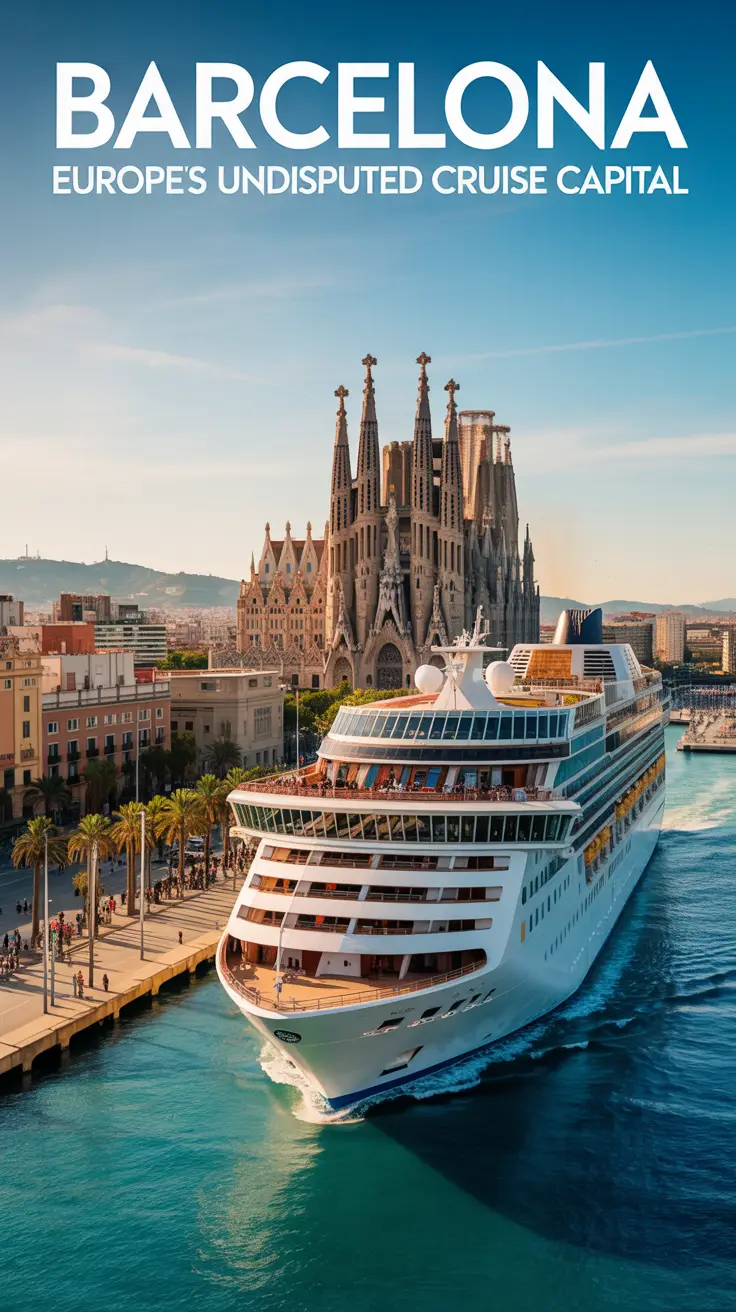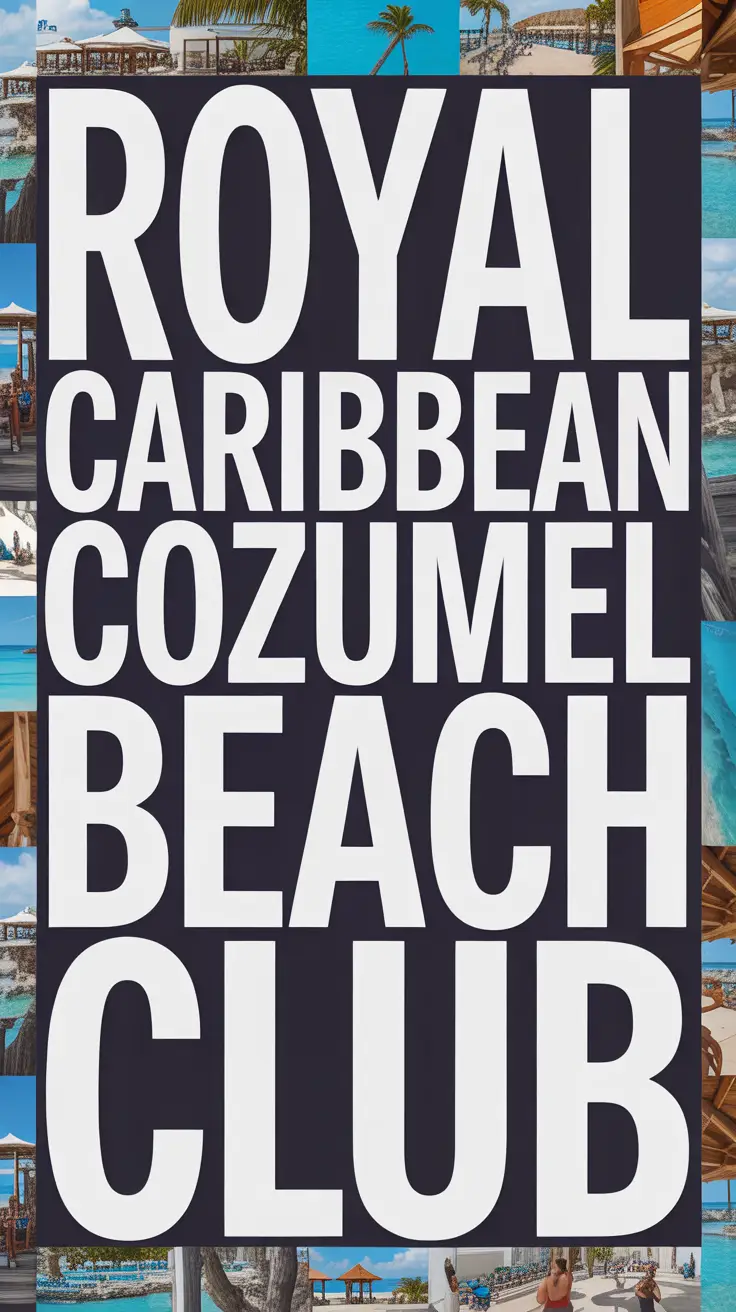Barcelona didn’t stumble into its role as Europe’s cruise capital – it conquered it with the strategic precision of a Catalan grandmother guarding her paella recipe. This Mediterranean jewel has become the undisputed heavyweight champion of European cruise ports, and there’s more to this story than meets the eye. For those planning their next adventure, exploring Mediterranean cruises reveals why Barcelona stands out among all destinations.
The Perfect Storm of Geography and Glamour
Barcelona’s rise to cruise supremacy wasn’t accidental. The city sits at the crossroads of Western Mediterranean itineraries like a perfectly placed chess piece. Its deep-water port can accommodate the floating cities we call mega-ships, while the city itself offers enough pre- and post-cruise attractions to keep even the most demanding travelers happy.
The port’s transformation from industrial workhorse to cruise paradise involved relocating cargo operations and creating dedicated cruise facilities that would make other ports weep with envy. Smart urban planning turned potential eyesores into Instagram-worthy backdrops.
What Makes Barcelona Irresistible to Cruise Lines
Cruise executives don’t just throw darts at maps when choosing homeports. Barcelona ticks every box on their wish list:
- Seven dedicated cruise terminals – more than most countries have airports
- Year-round sailing weather – Mediterranean sunshine doesn’t take sick days
- Excellent flight connections – passengers can reach Barcelona from virtually anywhere
- Tourist infrastructure – hotels, restaurants, and attractions that actually want cruise passengers
- Strategic location – perfect jumping-off point for France, Italy, and the Balearic Islands
“Barcelona understood early that cruise passengers aren’t just numbers – they’re ambassadors for the destination,” explains Maria Gonzalez, Director of Cruise Operations at the Port of Barcelona. “We invested in making their experience seamless from the moment they arrive until they sail away.”
The Numbers That Tell the Tale
Barcelona’s cruise statistics read like a Mediterranean fairy tale. The port handles more cruise passengers than any other European destination, with multiple ships often docked simultaneously. On peak days, the waterfront resembles a floating city convention. For comprehensive details about the facilities, check out this complete guide to Barcelona’s seven cruise terminals.
| Port Feature | Barcelona Advantage |
|---|---|
| Terminal Capacity | Can handle 7 ships simultaneously |
| Passenger Processing | Up to 30,000 passengers daily |
| Distance to City Center | 15 minutes by taxi |
| Airport Connectivity | Direct flights from 200+ cities |
The Dark Side of Success
Barcelona’s cruise dominance isn’t all sangria and sunshine. The city grapples with overtourism, and cruise passengers bear some of the blame. Local authorities have implemented measures to manage the flow, including limiting the number of cruise ships and restricting access to certain neighborhoods during peak hours.
The environmental impact also raises eyebrows. Massive ships burning fuel and generating waste while thousands of passengers flood the city for a few hours creates sustainability challenges that Barcelona continues to address through green initiatives and shore power connections. Learn more about these efforts in our article on how Barcelona port is going green.
Insider Secrets for Cruise Passengers
Here’s what veteran cruisers know about maximizing their Barcelona experience:
- Book shore excursions strategically – Skip the crowded Sagrada Família tours and explore lesser-known gems like Gaudí’s architectural wonders early morning
- Use the cruise shuttle wisely – It drops you at the Columbus Monument, perfect for walking to Las Ramblas
- Timing is everything – Arrive early for embarkation to beat the afternoon rush
- Currency tips – Many shops near the port accept euros and dollars, but you’ll get better rates with euros
What Other Ports Can Learn
Barcelona’s success formula isn’t rocket science, but it requires commitment. The city invested heavily in infrastructure while maintaining its authentic character. They didn’t just build terminals; they created experiences. The seamless integration between port facilities and city attractions makes Barcelona feel like it was designed for cruising. Understanding Barcelona port operations reveals the strategic thinking behind this success.
Bonus Tips Only the Pros Know
- Terminal Wi-Fi hack – Terminal A has the fastest free internet if you need to upload photos
- Luggage storage secret – Estació Sants train station offers day storage for pre-cruise exploration with quality travel luggage
- Local SIM cards – Buy them at the airport, not the port, for better prices
- Restaurant timing – Lunch starts at 2 PM, dinner at 9 PM – plan accordingly or stick to tourist areas
- Metro day pass – Cheaper than multiple taxi rides and covers airport transport
The Future of Barcelona’s Cruise Dominance
Barcelona continues evolving its cruise infrastructure while balancing tourism pressures. New environmental regulations and smart city initiatives aim to maintain the port’s competitive edge while addressing sustainability concerns. The city’s commitment to innovation suggests its cruise capital status isn’t going anywhere soon. Discover more about these developments in our piece on the technology revolution at Barcelona port.
For more information about Barcelona’s cruise facilities and services, visit the official Port of Barcelona website.
Common Questions
Can you walk from the cruise terminal to downtown Barcelona?
Yes, but it’s a long walk – about 45 minutes from most terminals. The shuttle service or taxi is more practical, especially with luggage. For detailed transportation options, read our complete guide on getting from Barcelona port to the city center.
Do Barcelona cruise terminals have luggage storage for early arrivals?
Most terminals offer limited storage, but it’s primarily for same-day passengers. For overnight storage, use the train station or hotel services.
Is Barcelona’s cruise port operational during bad weather?
Barcelona’s port rarely closes due to weather. The Mediterranean climate and protected harbor make it one of Europe’s most reliable cruise ports year-round.
How early should you arrive for embarkation in Barcelona?
Arrive 2-3 hours before departure during peak season. The port processes thousands of passengers daily, and earlier arrival means shorter lines and more time to explore the ship. Make sure to pack essentials in comfortable day backpacks for easy access during embarkation.
Barcelona’s transformation into Europe’s cruise capital represents more than just maritime success – it’s a masterclass in destination development. The city proved that with the right combination of infrastructure investment, strategic location, and authentic charm, any port can become a cruise powerhouse. As you plan your next Mediterranean adventure, remember that Barcelona isn’t just a departure point – it’s the beginning of an unforgettable journey before you even set sail.







